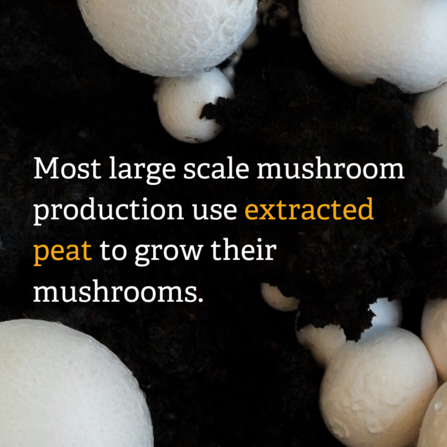Caring for our amazing peatlands is a vital step in tackling our dual climate and nature crises, but without knowing it, we may be buying and eating mushrooms that have been grown in extracted peat. Surely this can’t be a good enough reason for devastating our peatland habitats and contributing to the decline of our native wildlife? But what can you do?
Across The Wildlife Trusts, we have launched our Hidden Peat campaign, in which we have asked our supporters to become Peat Inspectors: our eyes and ears in the fight to remove peat from the supply chain. The aim - to be on the lookout for clear and obvious labelling for the use of peat in a product. Does it contain peat? Or is it peat-free? We need to know.


